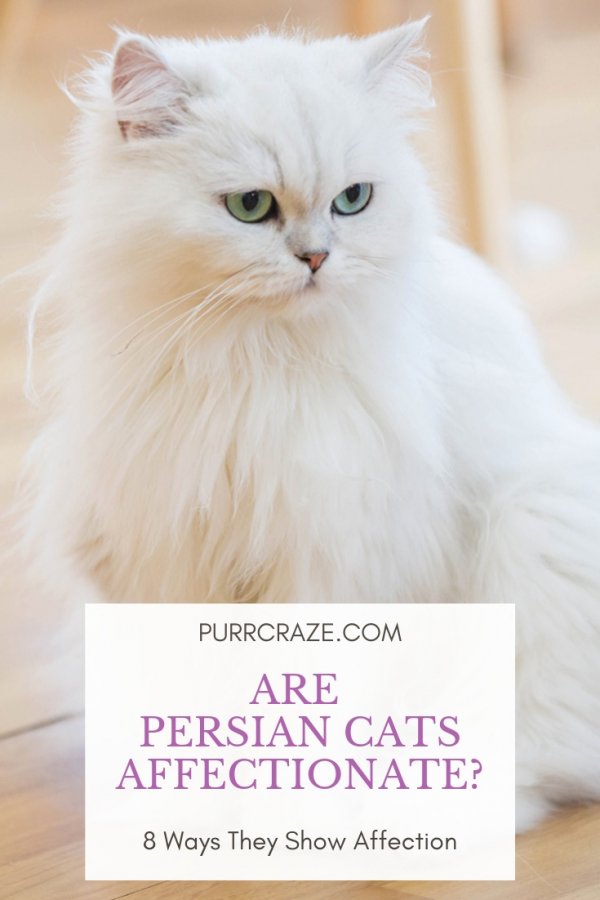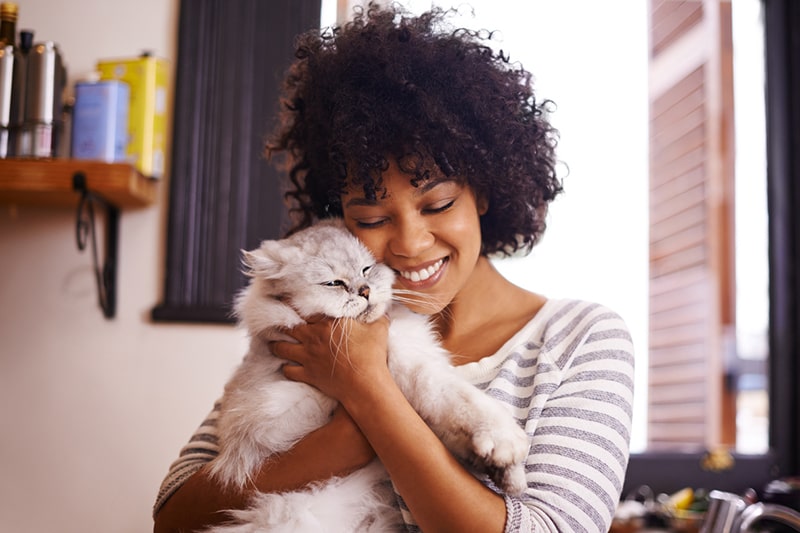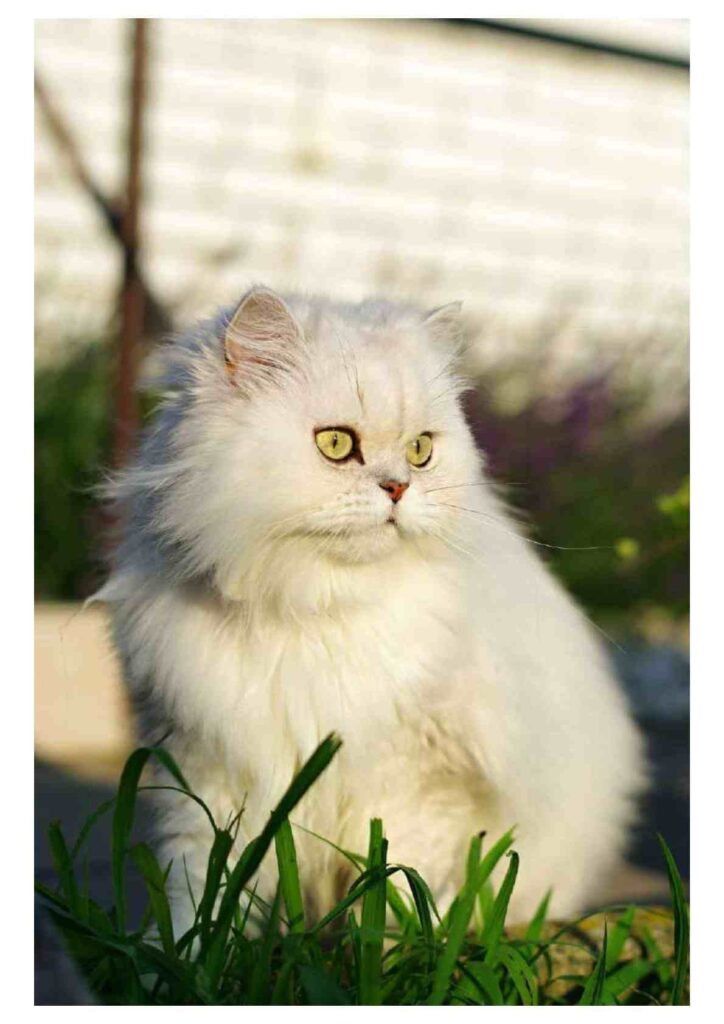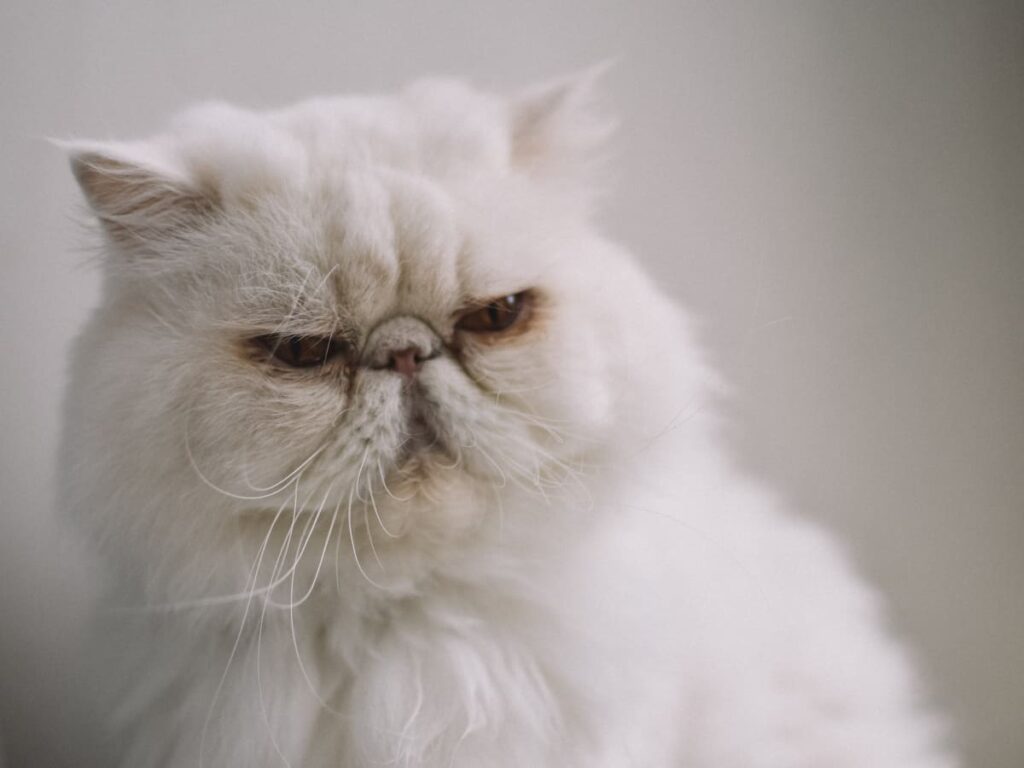Have you ever wondered about the bond between Persian cats and humans? It’s fascinating how these fluffy and adorable felines can easily capture our hearts. They have a certain charm that is hard to resist. In my blog, “Persian Cat Dude,” I aim to explore this beautiful relationship and provide you with in-depth knowledge about Persian cats. Whether you’re a cat lover or simply curious about these majestic creatures, you’re in for a treat.
Throughout my blog, I share insights about the history, care, and behavior of Persian cats. From their origins in ancient Persia to their distinctive features and temperament, you’ll learn everything you need to know to truly understand these captivating feline companions. But it’s not all about the facts and figures. I also delve into the emotional aspect of the bond between Persian cats and humans. Cats have a unique way of bringing joy and comfort into our lives, and I aim to capture that essence in my writing.
In the upcoming posts, I’ll take you on a journey to explore the world of Persian cats. We’ll discuss topics such as grooming tips, health care, training strategies, and even the best toys to keep your furry friend entertained. It’s my mission to provide reliable information that you can count on, while also keeping you engaged and entertained. So stay tuned and get ready to dive into the wonderful world of Persian cats!
The Bond Between Persian Cats and Humans

History of Persian Cats
Origins of Persian Cats
The origins of Persian cats can be traced back to ancient Persia (modern-day Iran), where they were highly regarded for their beauty and grace. These elegant felines were prized possessions of nobles and enjoyed a privileged life in luxurious palaces.
Early Breeding and Development
The selective breeding of Persian cats began in the 17th century when Italian traveler Pietro Della Valle brought a pair of these majestic animals home with him. The breed was further developed in Europe, particularly in England, where breeders aimed to enhance the features that are now characteristic of Persian cats.
Popularity and Spread
Since their introduction to the Western world, Persian cats have gained immense popularity. Their captivating appearance, calm demeanor, and affectionate nature have made them beloved pets in households around the globe. Today, Persian cats are one of the most recognized and adored cat breeds.
Physical Characteristics of Persian Cats
Distinctive Facial Features
One of the most distinguishing features of Persian cats is their adorable flat face. Their short, broad nose and large round eyes give them a sweet and charming expression. This unique facial structure is the result of selective breeding over generations.
Body Structure and Size
Persian cats have a medium to large build with a sturdy bone structure. Despite their stocky appearance, they move with grace and elegance. These cats have short legs, a deep chest, and a broad back that contributes to their robust physique.
Coat Types and Colors
The luxurious coat of a Persian cat is one of its most coveted attributes. Their long, thick fur comes in various patterns and colors, including solid, bicolor, tortoiseshell, and tabby. The Persian cat’s coat requires regular grooming to prevent matting and ensure its lustrous appearance.
Eye Colors
Persian cats have captivating eyes that come in a wide range of colors. The most common eye colors found in Persian cats are shades of blue, green, gold, and copper. The combination of their stunning eyes and unique facial features adds to their overall beauty.
Grooming Needs
Due to their long, dense fur, Persian cats require regular grooming to keep their coats healthy and free from tangles. Daily brushing is necessary to prevent matting and to remove loose hair. In addition to grooming, regular baths, ear cleaning, and nail trimming are essential for their overall well-being.

Personality and Temperament of Persian Cats
Gentle and Cuddly Nature
Persian cats are known for their gentle and affectionate nature. They enjoy being cuddled and pampered by their owners. These cats thrive on human companionship and love to curl up on their owner’s lap, making them the perfect snuggle buddies.
Need for Affection
Persian cats crave attention and affection from their owners. They thrive in a loving and nurturing environment where they receive plenty of cuddles, petting, and quality time with their human companions. Their affectionate nature makes them excellent companions for individuals of all ages.
Adaptability to New Environments
Despite their regal appearance, Persian cats are adaptable creatures. They can adjust well to different living arrangements, whether it be in a small apartment or a spacious house. However, they are sensitive to changes in their environment and may require some time to acclimate to new surroundings.
Independent or Lap Cat?
While Persian cats have an independent streak, they are not typically known for their high level of energy and playfulness. They prefer a relaxed and laid-back lifestyle, making them more inclined to be lap cats rather than active explorers. However, they still enjoy gentle playtime and interactive toys.
Behavioral Traits
Persian cats are generally calm and peaceful animals. They are not known for their vocalization and tend to be quiet companions. However, they can be sensitive to loud noises and sudden changes in their environment. Positive reinforcement and a peaceful atmosphere are crucial for keeping them content and happy.
Health and Care of Persian Cats
Common Health Issues
Like all cat breeds, Persian cats are susceptible to certain health issues. Some common health concerns for Persian cats include polycystic kidney disease (PKD), respiratory problems, eye infections, dental issues, and obesity. Regular veterinary check-ups and a balanced diet can help prevent and address these issues.
Vaccination and Preventive Care
To ensure the well-being of Persian cats, it is essential to follow a proper vaccination schedule recommended by a veterinarian. Routine preventive care, such as parasite control and dental hygiene, is crucial for maintaining their overall health and longevity.
Proper Nutrition and Diet
A well-balanced and nutritious diet is crucial for the health of Persian cats. High-quality cat food that meets their specific nutritional needs, including a balance of protein, fats, carbohydrates, vitamins, and minerals, is recommended. It is important to consult with a veterinarian to determine the best diet for your Persian cat.
Exercise and Playtime
While Persian cats are not known for their high activity levels, they still require regular exercise to maintain a healthy weight and overall well-being. Interactive toys, scratching posts, and short play sessions can provide mental stimulation and physical activity for your Persian cat.
Regular Grooming
The long, silky fur of Persian cats requires regular grooming to prevent matting and keep their coats healthy. Daily brushing not only removes loose hair but also stimulates blood circulation and distributes natural oils throughout their fur. Monthly baths, ear cleaning, and nail trimming are also important aspects of their grooming routine.
Litter Box Training
Litter box training is essential for Persian cats to maintain good hygiene and cleanliness. Providing a suitable litter box with low sides and high-quality litter will encourage proper litter box habits. Regular cleaning and providing multiple litter boxes in a multi-cat household are necessary to prevent accidents.
Visiting the Veterinarian
Regular veterinary visits are crucial for maintaining the health and well-being of Persian cats. Annual check-ups, vaccinations, and preventive care should be scheduled to monitor their overall health and address any potential health issues.

Persian Cats as Pets
Suitability for Families
Persian cats are well-suited for families of all sizes. Their calm and gentle nature makes them excellent companions for children and adults alike. However, it is important to supervise interactions between young children and Persian cats to ensure both the safety of the child and the comfort of the cat.
Compatibility with Other Pets
While Persian cats generally get along well with other animals, proper introductions and gradual socialization are essential. Slowly introducing a Persian cat to other pets in the household, such as dogs or other cats, can help establish a harmonious relationship over time.
Living Arrangements
Persian cats can adapt to various living arrangements, including apartments and houses. However, they are primarily indoor cats due to their long fur and sensitive nature. Providing a safe and enriching indoor environment with plenty of toys, scratching posts, and hiding spots will help keep them mentally stimulated.
Indoor or Outdoor?
Due to their long fur and gentle nature, Persian cats are best kept indoors to protect them from potential dangers such as traffic, predators, and exposure to harsh weather conditions. However, supervised outdoor time in a secure and enclosed area, such as a catio, can provide fresh air and mental stimulation.
Introducing a Persian Cat to a New Home
To ensure a smooth transition for a Persian cat into a new home, it is important to create a safe and comfortable space for them. Providing a quiet room with all their essential needs, including food, water, litter box, and a cozy bed, will help them adjust gradually. Patience, gentle interactions, and positive reinforcement will help build trust and a strong bond.
Breeding and Showing Persian Cats
Ethical Breeding Practices
Ethical breeding practices are essential for maintaining the health and quality of Persian cats. Responsible breeders prioritize the overall well-being of cats, including genetic testing for potential health issues and proper care for the breeding cats and their kittens.
Preparing for Breeding
Breeding Persian cats requires extensive knowledge and preparation. Breeders carefully select breeding pairs based on health, temperament, and adherence to breed standards. Before breeding, both male and female cats undergo health screenings and receive proper veterinary care to ensure they are in optimal breeding condition.
Pregnancy and Birthing Process
During pregnancy, Persian cats require extra care and nutrition. Monitoring their health and providing a comfortable and stress-free environment is crucial. As the due date nears, expectant mothers should have access to a secure and quiet area where they can safely give birth and care for their kittens.
Caring for Kittens
Caring for Persian kittens requires meticulous attention to their needs. From providing proper nutrition and veterinary care to socializing and introducing them to new experiences, breeders play a vital role in nurturing the kittens’ development. Regular check-ups, vaccinations, and proper grooming are essential for their healthy growth.
Showing Persian Cats
Showing Persian cats in cat shows is a remarkable way to showcase their beauty and breed characteristics. Exhibiting Persian cats in reputable cat shows allows for recognition and appreciation of their unique features. Careful grooming, training, and adherence to breed standards are important aspects of successful show participation.
Judging Standards
When judging Persian cats in cat shows, judges adhere to specific breed standards set by cat associations. Physical attributes such as coat condition, body structure, head shape, eye color, and overall beauty are carefully evaluated. Judges also consider the cat’s temperament and behavior during the judging process.

Famous Persian Cats
Celebrity Persian Cats
Throughout history, Persian cats have enjoyed the attention of celebrities and prominent figures. From royalty to artists, these enchanting felines have been cherished companions of famous individuals. Some notable celebrity Persian cat owners include Florence Nightingale, Marilyn Monroe, and Karl Lagerfeld.
Persian Cats in Literature and Media
Persian cats have made appearances in various forms of literature and media. They have been celebrated in children’s books, novels, and poems for their elegance and charm. One of the most famous literary portrayals of a Persian cat is “The Cat in the Hat” by Dr. Seuss.
Persian Cats in History
Persian cats have a rich historical significance and have been present in many ancient civilizations. They are an integral part of Persian culture and have been revered for their beauty and mystique for centuries. These regal cats have left their mark in history with their captivating presence.
Training and Socializing Persian Cats
Litter Box Training
Litter box training is essential for Persian cats to maintain good hygiene and cleanliness. Providing a suitable litter box with low sides and high-quality litter will encourage proper litter box habits. Patiently and consistently encouraging the use of the litter box will help them develop good habits.
Basic Obedience Commands
Persian cats, like other cats, can be trained to respond to basic obedience commands such as “sit,” “stay,” and “come.” Using positive reinforcement techniques, such as treats and praise, will motivate them to learn and follow commands. Keep training sessions short, fun, and reward-based to keep them engaged.
Behavioral Training
Persian cats, known for their calm nature, may benefit from behavioral training to address any undesirable behaviors. Training can help discourage scratching furniture, jumping on countertops, or excessive meowing. Positive reinforcement techniques and redirection should be used to encourage appropriate behavior.
Socializing with People and Animals
Early socialization is crucial for Persian cats to develop positive relationships with both people and animals. Exposing them to various sights, sounds, and experiences from a young age will help them become well-rounded and confident individuals. Slow introductions to new people and animals should be done in a controlled and calm manner.
Addressing Undesirable Behaviors
If a Persian cat exhibits undesirable behaviors, it is important to address them promptly and effectively. Identifying the underlying cause of the behavior, such as stress or boredom, can help develop a targeted training approach. Using positive reinforcement and redirecting their attention to appropriate behaviors can help modify unwanted habits.

Persian Cats in Different Cultures
Persian Cats in Persian Culture
Persian cats hold a special place in Persian culture. They are often associated with elegance, grace, and beauty. These majestic felines have been celebrated through art, poetry, and literature, symbolizing prosperity and good luck.
Persian Cats in Western Culture
In Western culture, Persian cats are highly regarded for their regal appearance and gentle nature. They have become popular pets and are often depicted in art, fashion, and popular media. Their luxurious coats and captivating eyes make them a symbol of beauty and sophistication.
Symbolism and Mythology
Persian cats have appeared in various mythologies and symbolize different meanings in different cultures. In ancient Egypt, they were associated with the goddess Bastet, representing protection and fertility. In some cultures, they are believed to bring good luck and prosperity to their owners.
Persian Cats in Art and Photography
Persian Cats in Paintings
The beauty and allure of Persian cats have inspired many artists throughout history. Their elegant appearance and captivating eyes have been depicted in numerous paintings. From classic portraits to contemporary art, Persian cats continue to be a popular subject in the art world.
Persian Cats in Photographs
Photographers have captured the timeless beauty of Persian cats through their lenses. From elaborate studio portraits to candid moments, these photographs showcase the regal presence and unique features of Persian cats. The ability to capture their stunning coats and expressive eyes in photographs is a testament to their allure.
Artistic Representation of Persian Cats
Persian cats have been incorporated into various artistic forms, including sculptures, ceramics, and even jewelry. Their distinctive features and graceful presence lend themselves well to artistic interpretation. Persian cat-inspired artwork adds a touch of elegance and sophistication to any space.
Persian Cats as Inspirations
The elegant and captivating nature of Persian cats has inspired artists and creative individuals across different mediums. Their beauty, grace, and unique characteristics have influenced fashion designers, writers, and even musicians. Persian cats continue to serve as a muse for creative endeavors.
Finding and Choosing a Persian Cat
Adopting from Shelters
Adopting a Persian cat from a shelter is a wonderful way to provide a loving home for a cat in need. Many shelters and rescue organizations have Persian cats available for adoption. By adopting from a shelter, you are not only giving a deserving cat a second chance but also supporting the important work of animal welfare organizations.
Responsible Persian Cat Breeders
If you choose to purchase a Persian cat from a breeder, it is important to ensure they follow responsible breeding practices. Responsible breeders prioritize the overall health and well-being of their cats and provide a nurturing environment for their kittens. Researching and selecting a reputable breeder will help ensure you are obtaining a healthy and well-socialized Persian cat.
Choosing the Right Persian Cat
When choosing a Persian cat, it is important to consider your lifestyle, living arrangements, and the cat’s specific needs. Factors such as the cat’s personality, grooming requirements, and health history should be taken into account. Spending time with the cat before making a decision will allow you to assess if it is the right fit for you and your family.
Evaluating Health and Temperament
Whether adopting from a shelter or purchasing from a breeder, evaluating the health and temperament of a Persian cat is essential. Observing the cat’s behavior, checking for any signs of illness, and reviewing its medical records can provide valuable insights into its overall well-being. Consulting with a veterinarian for a thorough examination is highly recommended before bringing a Persian cat home.
Myths and Misconceptions about Persian Cats
Persian Cats as High-Maintenance Pets
One common misconception about Persian cats is that they are high-maintenance pets. While their long fur requires regular grooming, they are generally low-energy cats that do not require excessive exercise. With proper grooming routines and care, Persian cats can be kept looking beautiful without too much effort.
Concerns about Health Issues
Persian cats are known to have certain breed-specific health issues, such as polycystic kidney disease (PKD) and respiratory problems. However, responsible breeding practices and regular veterinary care can help minimize these concerns. Genetic testing and early detection are crucial in managing the health of Persian cats.
Negative Stereotypes
Persian cats have sometimes been associated with negative stereotypes, particularly regarding their perceived laziness or aloofness. However, each cat has its own unique personality, and not all Persian cats fit these stereotypes. Many Persian cats are affectionate, gentle, and interactive companions.
Dispelling Common Myths
By dispelling common myths and misconceptions, we can better understand and appreciate the true nature of Persian cats. They are loving and beautiful creatures that bring joy and companionship to their owners. Educating ourselves about the breed can help us form deeper connections and ensure the well-being of these majestic felines.
Celebrating Persian Cats
Persian Cat Appreciation Day
Persian Cat Appreciation Day is a special day dedicated to celebrating the beauty and charm of Persian cats. This day provides an opportunity for Persian cat owners, enthusiasts, and admirers to come together and share their love for these regal felines. It is a time to recognize their unique qualities and express gratitude for their presence in our lives.
Persian Cat Clubs and Events
Persian cat clubs and organizations host various events throughout the year, including cat shows, meet-and-greets, and educational seminars. These gatherings provide opportunities for Persian cat enthusiasts to connect, share experiences, and learn more about the breed. Participating in these events can be a wonderful way to celebrate and engage with the Persian cat community.
Online Communities and Forums
The internet has provided a platform for Persian cat owners and enthusiasts to connect and share their experiences. Online communities and forums dedicated to Persian cats offer a wealth of information, support, and camaraderie. Engaging in these communities allows individuals to celebrate and learn from others who share their love for Persian cats.
Sharing Stories and Photos
Sharing stories and photos of Persian cats is a delightful way to celebrate their unique personalities and captivating beauty. Whether through social media, personal blogs, or online platforms, sharing experiences and pictures allows us to connect with others who appreciate the bond between humans and Persian cats.
Conclusion
The bond between Persian cats and humans is a testament to the remarkable companionship and love that can be shared between two different species. From their regal appearance to their gentle nature, Persian cats have captured the hearts of people around the world. Understanding and caring for Persian cats is essential to ensure their well-being and to appreciate the beauty and charm they bring into our lives. By celebrating their unique qualities and creating a nurturing environment, we can continue to strengthen the bond between Persian cats and humans for generations to come.
Frequently Asked Questions
- Are Persian cats good with children?
- Persian cats are generally good with children, but proper supervision and gentle interactions should be enforced to prevent accidental harm to the cat or child. Introducing them gradually and monitoring their interactions will ensure a safe and harmonious relationship.
- How often should I groom my Persian cat?
- Persian cats require daily grooming to prevent matting and maintain the health of their coats. Regular brushing, monthly baths, ear cleaning, and nail trimming are essential aspects of their grooming routine.
- Can Persian cats be kept as outdoor cats?
- Persian cats are best suited as indoor cats due to their long fur and sensitive nature. Outdoor exposure can put them at risk of various dangers, including traffic accidents, predators, and exposure to harsh weather conditions. If outdoor time is desired, it should be done in a secure and supervised environment, such as a catio.
- Do Persian cats have any specific health issues?
- Persian cats are prone to certain breed-specific health issues, including polycystic kidney disease (PKD), respiratory problems, eye infections, dental issues, and obesity. Regular veterinary check-ups and proper care can help prevent and address these issues.
- How can I socialize my Persian cat with other pets?
- Introducing a Persian cat to other pets should be done gradually and in a controlled manner. Providing supervised interactions and positive reinforcement will help establish a harmonious relationship between the Persian cat and other pets. Patience and consistency are key in successful socialization.
- Are Persian cats high-maintenance pets?
- While Persian cats do require regular grooming to maintain the health and appearance of their coats, they are generally low-energy cats that do not require excessive exercise. With proper grooming routines and care, Persian cats can be kept looking beautiful without too much effort.
- What is the lifespan of a Persian cat?
- On average, Persian cats have a lifespan of around 12 to 16 years. Providing proper veterinary care, a balanced diet, regular exercise, and a stress-free environment can help ensure a long and healthy life for your Persian cat.
- Can Persian cats be trained to do tricks?
- Persian cats are intelligent and can be trained to respond to basic obedience commands using positive reinforcement techniques. While they may not perform tricks like some other breeds, training and interactive play can help stimulate their minds and keep them mentally engaged.
- Are Persian cats good for apartment living?
- Persian cats can adapt well to apartment living as long as they have enough space to move around comfortably. Providing them with scratching posts, toys, and an enriching indoor environment will help keep them mentally stimulated and content.
- Are Persian cats hypoallergenic?
- While no cat breed is truly hypoallergenic, Persian cats produce fewer allergens compared to some other breeds. However, individual reactions to cat allergens vary, and it is important to spend time with a Persian cat to determine if you have any allergic reactions before bringing one into your home.